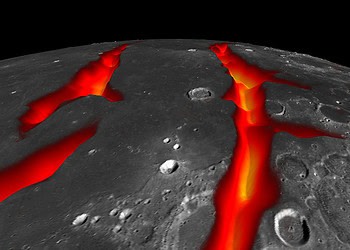A recent multi-institutional study spearheaded by NASA has revealed the most volcanic place we know of. The planet, coined L 98-59 b, seems to be perpetually reshaped by eruptions more violent and persistent than anything found thus far.
Planet goes Boom!
Every 2.25 days, the planet which lies 35 light years away, completes a lap around its red dwarf sun, a journey so rapid and so close to its star that its atmosphere should have been blown away long ago. And yet, something appears to be replenishing it.
Astronomers using the James Webb Space Telescope have now glimpsed what might be the answer: sulfur dioxide, a gas that, on Earth and on Jupiter’s moon Io, is a telltale sign of active volcanoes. If L 98-59 b, which was discovered in 2019, is constantly exhaling this gas, it would suggest a world of unimaginable geologic turmoil, where tides of molten rock surge beneath the crust, and volcanoes erupt with such frequency that the planet’s very surface may be in a constant state of renewal.
L 98-59 b’s name, as forgettable as a serial number, disguises the staggering nature of the world itself. It is smaller than Earth and perhaps the first sub-Earth-sized exoplanet to show signs of an atmosphere of any kind, especially around a red dwarf. The stars often bathe their planets in intense radiation, stripping them of any protective air.
For years, scientists assumed that small, rocky planets like this one, so close to such an active star, could never hold onto an atmosphere. And perhaps that is still true. But what if, in the case of L 98-59 b, an atmosphere does not simply “hold on,” but rather continually renews itself?
Fuel for volcanoes
The answer may lie in the same mechanism that makes Jupiter’s Io the most volcanic world in the Solar System. Io is caught in a gravitational tug-of-war, pulled between Jupiter’s immense mass and the influence of neighboring moons. The constant flexing generates heat inside the moon, melting rock into magma and forcing it to the surface in an endless cycle of eruptions.
L 98-59 b appears to experience the same fate, only on a far greater scale. The pull of its star and the gravitational nudges of its sibling planets may be stretching and squeezing it, generating enormous internal heat. The result is a planet where volcanic activity could be a relentless, inescapable fact of existence.
The evidence comes from JWST’s observations of starlight filtering through the planet’s atmosphere during four separate transits. Astronomers analyzed this light and found a spectral signature that fits sulfur dioxide. This discovery, if confirmed, would mean that the planet is continually releasing new gases into the sky, rebuilding its atmosphere as quickly as it loses it.
More observations will be needed to confirm the volcanic nature of L 98-59 b. Future studies may look for additional gases, or for heat signatures that reveal the presence of molten rock just beneath the surface. But already, this planet is rewriting how atmospheres endure the restless forces that shaped the Earth and the Moon may be at work on worlds light-years away.







